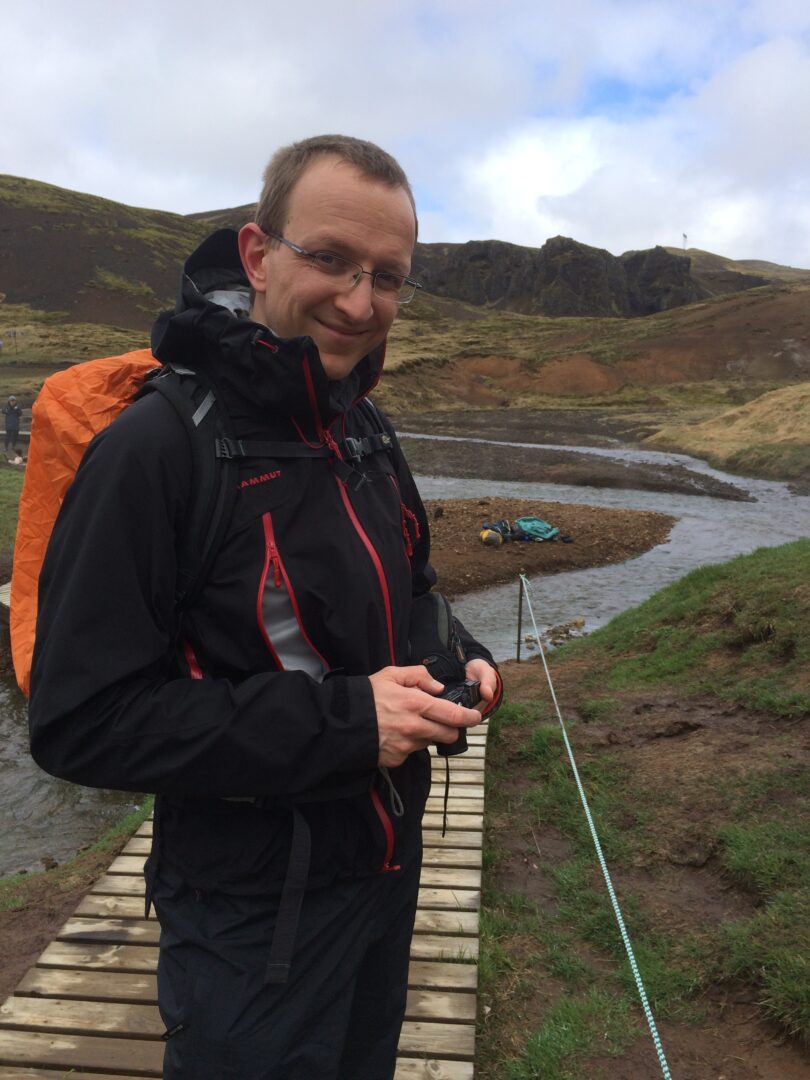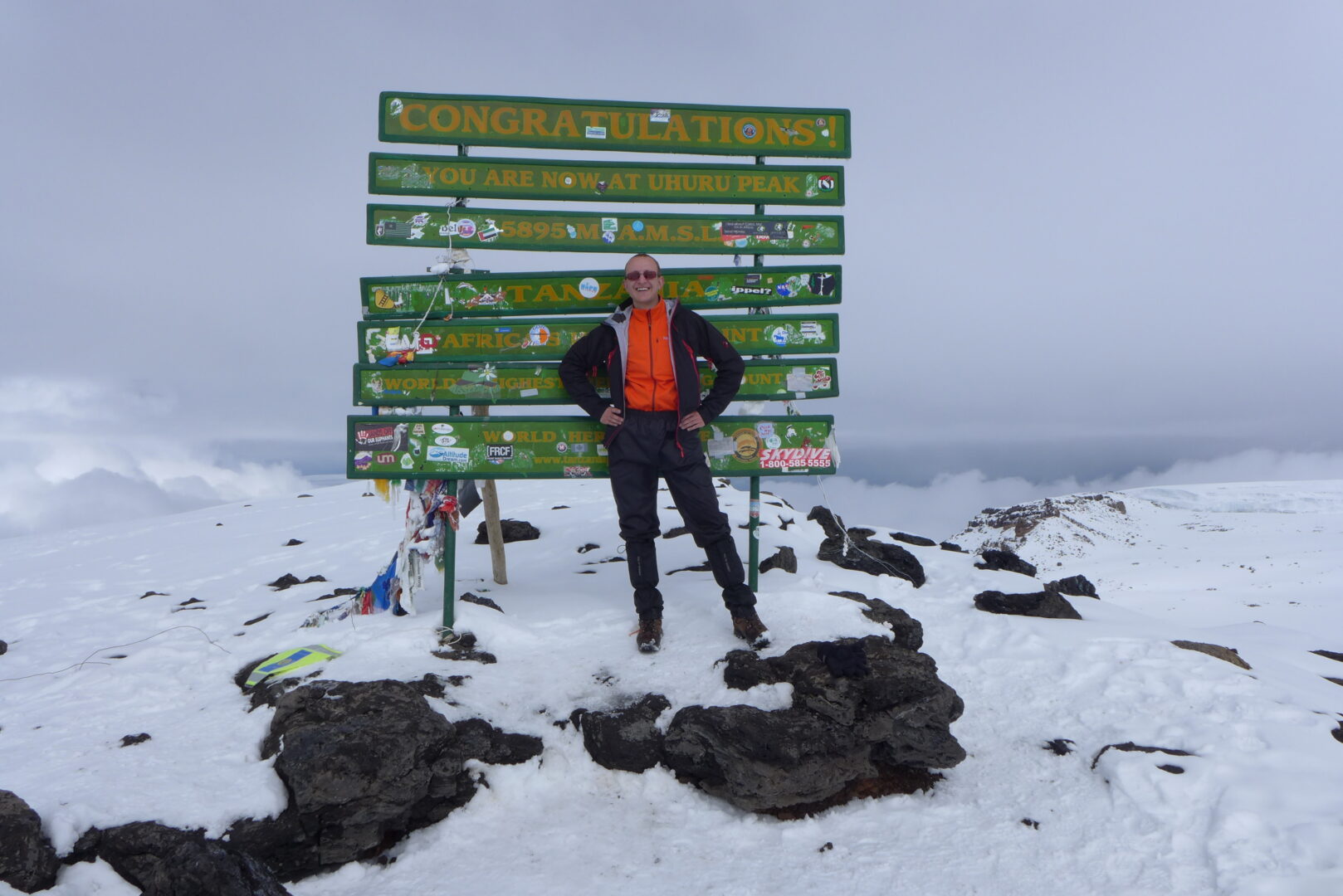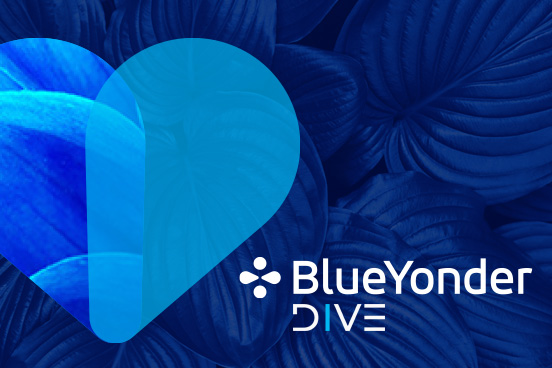Michael Prim runs the Service First initiative at Blue Yonder, which aims to provide guidance to key players within Blue Yonder on what it means to be SaaS (Software-as-a-Service). A student worker at Blue Yonder in 2009 while receiving his PhD in physics, Michael shares his background with Blue Yonder’s strategic advisor Michael Feindt at university, his experience as a boomerang and valuable advice on the importance of learning to make big challenges feel smaller.

Where did you go to school, and what degrees do you have?
I went to high school in my local town and then moved to Karlsruhe for a masters of physics, followed by a physics PhD, focusing on particle physics and data analysis. I was in the same group as Blue Yonder’s [founder] Michael Feindt at university.
When did you join Blue Yonder? What did you do before that?
I rejoined in September 2017. I first joined the original Blue Yonder in 2009 as a working student to get some industry exposure in parallel to my PhD. Michael Feindt was really inspiring at the start of my career journey as he showed how to apply learnings from physics to the industry, but I left in 2012 to focus on finishing my PhD.
After my PhD, I spent nearly four years in the mobile advertising industry, building a massive scaling data management platform for high frequency, real-time trading of advertisement placements.
What was your first job at Blue Yonder? How did your career progress from there?
After rejoining Blue Yonder in 2017, I took a SaaS operations lead role, owning our customer-facing service desk and the operations of SaaS services. Although I owned that critical piece, it was a horizontal role without any direct reports, which may sound very strange to many people, but I joined shortly after Blue Yonder made the decision to focus on SaaS for retail. To succeed, we needed to bring development and operations even further together and create an environment that allowed us to ship changes and value to our customers in a high frequency. We established a virtual service desk organization that was staffed with developers in rotating shifts and massively improved our efficiency. I still remember the moment when a colleague said he deployed all customer systems to the latest release during the duration of his lunch break. That was the moment I knew we had established the right processes to go fast but not break things.
After Blue Yonder, JDA at the time, acquired Blue Yonder, I was involved in different things to bring the companies together, and around platform topics.
Since last year, I’ve been running the Service First initiative that aims to provide guidance to key players within Blue Yonder on what it means to be SaaS. I really like the SaaS business model as it allows us to own the entire value stream, giving us the ability to provide great services to our customers as the best-in-class operator. Sharing knowledge and experience will hopefully contribute to success in it.
What are some of the challenges you’ve had to overcome in your career and how did you tackle them?
To succeed and stay successful as a company, you need to constantly change and adapt. To change, you not only need to understand where you want to go to, but also where you are. Only then will you know what to do. I think the challenge of change management was and still is the hardest for me, long before any technical or other challenges I have faced.
What usually helps me is to go back to the learning. For example, learning from books on the domain itself, and listening to people on the current situation and what’s preventing them to change. Combining all that yields new insights into what step to do, how to communicate it, and helping others to do it.
In general, if a challenge feels big, learning helps to make it look much smaller.
Can you point to a critical moment in your career that really made a difference in your path?
Leaving Blue Yonder and the physics bubble to do something else. Not taking the Blue Yonder offer back then gave me a totally different view on many things, on IT topics in particular. As a physicist, I am often used to IT, but I’m not a computer scientist. I learned so much in that time as I was exposed to a different environment.
Where do you see your career headed? What’s next for you?
To be honest, I never really had a real career plan. I like problems and challenges. They allow me to learn. I am an extremely curious person by nature, which is probably what got me into physics in the first place. I am confident that there are enough problems ahead of us and that there will be some left for me.

How has empathy as our core value resonated with you over the past year since the pandemic? Any lessons learned or words of advice?
Totally independent of the pandemic, I think empathy is an important value. It doesn’t matter if in personal or professional life, empathy creates mutual trust and is foundational to every healthy relationship.
Luckily, I have experienced empathy from all my managers throughout my career journey and am now trying to be empathic myself. I admit, it is not always easy and needs practice. As a tech person, it sometimes feels far away from my core competency, but I’ve yet to see a single high performing team that doesn’t practice empathy. Therefore, as a leader in technology, it is important to give equal attention to people, process and technology. People create the culture we work in and write the software that creates value for our customers.
How have the views of people from other cultures enhanced your educational, professional and personal experiences?
During my PhD, I had the pleasure of sharing an office with the only female PhD student on the floor and she was from a different cultural background – totally different office conversations than in the rest of the floor. Additionally, I spend time in Japan during my PhD and later joined a U.S.-Swiss-German start-up. From there, I rejoined the German Blue Yonder, which was bought by a U.S.-India company.
For me personally, the biggest learning out of all this was the different ways of communication among cultures. Germans tend to be very direct in their communication, myself included. It took me some time to understand the cultural differences in communicating and I am still learning every day.
What’s one leadership lesson you’ve learned and really taken to heart?
If you want to lead, you need to be followed. As a leader, you need to make sure that you communicate your thoughts with the people you lead in mind. That may be difficult if most of your thoughts are around your vision, but those you are leading are tied to reality. It’s even more important to be emphatic with those you want to lead and understand them to guide the way.
What podcasts are you listening to right now?
I tend to fall asleep when listening to audiobooks or podcasts and sitting somewhere, so I only listen to them while cycling. My favorite is Revisionist History with Malcolm Gladwell. It is about events, people, and other things from the past that deserve a second chance to be looked at.

